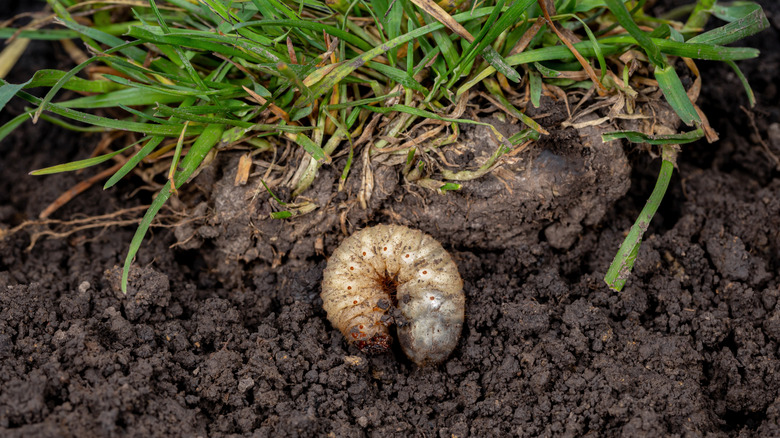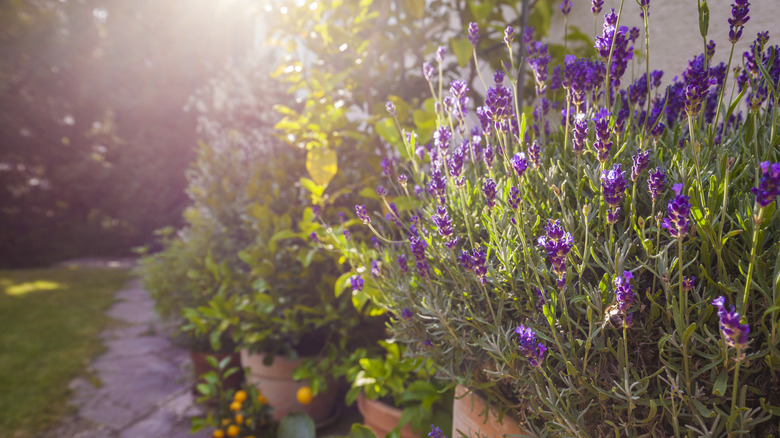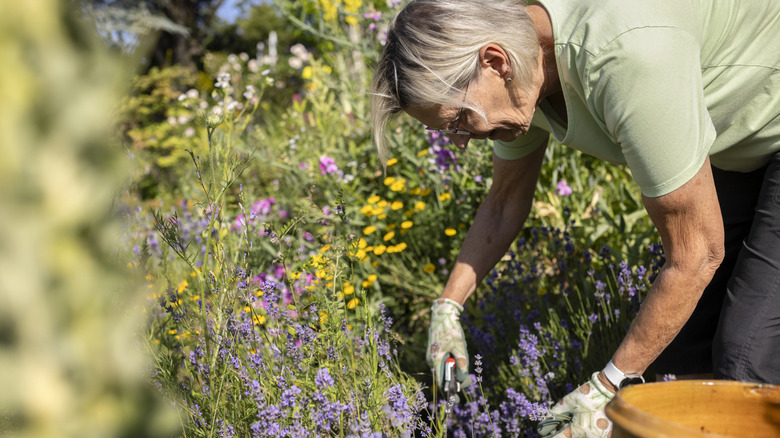The Popular Herb That Can Help Keep Grubs Out Of Your Garden
If you've noticed dead patches in your lawn, weakened plants, or roots that seem to disappear below the surface, there's a good chance grubs are to blame. These beetle larvae live in the soil and quietly feed on roots, often going unnoticed until the real damage is done. There are several ways to manage them, including chemical treatments, which can be effective when used correctly. But if you're looking to reduce your reliance on those products or want to try a more natural approach alongside other methods, lavender (Lavandula spp.) might help.
Lavender is best known for its scent and soft purple flowers, but it may also play a small role in keeping grub levels down. While the connection isn't direct, what we do know is that lavender helps repel certain adult beetles and other insects, which could make your garden less inviting to egg-laying pests. And the best part is that it's easy to grow, attractive, and can be a drought-resistant grass alternative for your yard.
What we know about lavender's effect on garden pests
Some of the unwanted pests you can naturally deter with lavender include moths, mosquitoes, aphids, and some beetles. Its pest-repelling ability comes from the strong scent and natural compounds in its essential oil, like linalool, camphor, borneol, and eucalyptol. These compounds work in a few different ways. They disrupt the insect's nervous system, leading to paralysis or death, but lavender's strong smell can confuse or repel insects, making it harder for them to find host plants.
The scent from lavender can also reduce how much insects feed and prevent them from laying eggs nearby, which means fewer pests over time. It's even been shown to have antifungal and antibacterial effects, offering extra protection for your plants. Since grubs are beetle larvae and lavender may make your garden less attractive to adult beetles, it could help reduce grub activity over time, especially when used alongside other pest control methods.
Planting lavender in ways that may make your garden less appealing to grubs
Before planting lavender, it's important to choose the right spot and conditions to help it thrive. The way you plant it makes a difference. You can line it along garden borders or tuck it between vegetables, flowers, or fruit shrubs. Its strong scent can help mask the smell of nearby plants, making them harder for pests to find. Lavender grows best in well-drained, sandy soil with a pH between 6.7 and 7.3. It needs full sun, with at least 6 to 8 hours of direct light each day, to stay healthy and produce the aromatic oils that may help deter pests. If your soil is heavy or tends to hold water, try planting lavender in containers, raised beds, or on sloped ground. These options allow for better drainage and help prevent root rot, which lavender is especially sensitive to.
It is hardy in USDA Zones 5 through 10. If you live in a colder area, choose a spot that gets extra warmth, like the south side of a stone wall, or cover the base of the plant with mulch to protect the roots. Once lavender is established, it doesn't need much care. Water young plants regularly until they settle in, then let the soil dry out between waterings. Space each plant about 12 to 18 inches apart to allow for good airflow and reduce the risk of disease. For even more pest protection, plant lavender alongside other strong-smelling herbs like rosemary, thyme, sage, or basil. These herbs produce similar oils that can confuse or repel pests, helping to naturally protect nearby plants.


